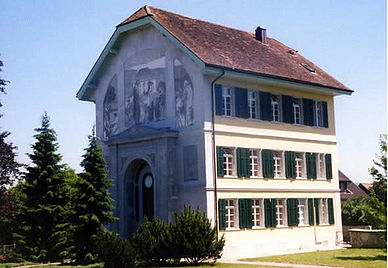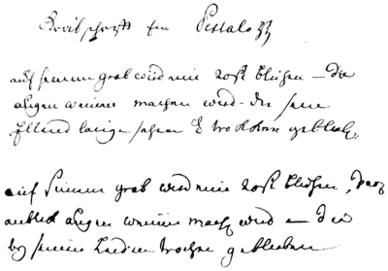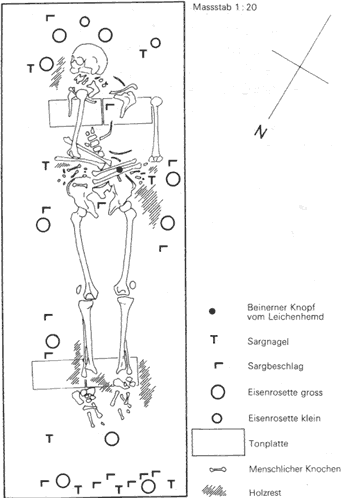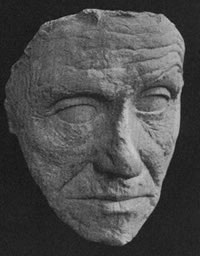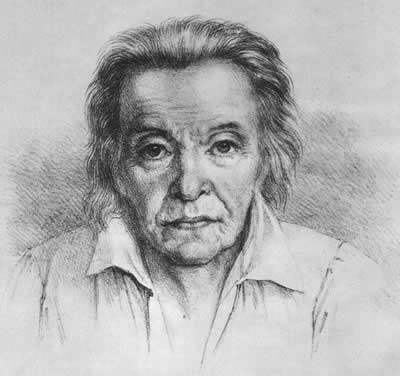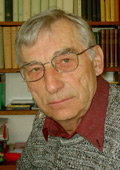The last years of Pestalozzi's life at the Neuhof
1825-1827
After Schmid was expelled from canton Waadt, Pestalozzi and the remaining four pupils left the institute with him in March 1825 and finally retired to the Neuhof. Pestalozzi still did not give up on his dream of recreating his former establishment for the poor. Together with his grandson Gottlieb he began to carry out his plans. He started to erect a new building, a decidedly more stately 'new' Neuhof, although he did not live to see the completion.
At the Neuhof Pestalozzi wrote his last great work, the "Schwanengesang". The book essentially consists of two parts: an autobiography and a complete description of his educational theory. His publisher,Cotta, was not willing to publish the sections of Pestalozzi's autobiography which gave a detailed description of the arguments at Yverdon. So Pestalozzi published this part of his autobiography with another publishing house (Fleischer in Leipzig) in 1826 with the title "Meine Lebensschicksale als Vorsteher meiner Erziehungsanstalt in Burgdorf und Iferten" (The Fate of my Life as Head of my Approved School in Burgdorf and Iferten') (PSW 27, pg. 215-344). In this he compares the ideal notion he had planned all his life with the realities at Yverdon and concludes that Yverdon had not developed how he wanted. In the beginning Pestalozzi places the criticism upon himself so he does not only judge and condemn himself and his own work, but also the work of his many colleagues. The fact that he initially judges the work of Schmid of a higher standard than the work of Niederer is understandable after all that had happened, although afterwards he does objectively examine them both. As evidence for his unbroken will of reconciliation Pestalozzi prints at the end of this work the very letter he brought in person to Niederer on February 1st in 1823. He concludes by saying: 'I still am and always will be of the same mind when I wrote this letter.' (PSW 27, pg. 344).
Niederer, of course, did not want any reconciliation. With the help of his 25 year old colleague Eduard Biber (1801-1874) he published a slanderous and vicious pamphlet titled "Contributions to Heinrich Pestalozzi's biography and to his latest work: "The Fate of my Life and so on", by adding his own letters and works, verified by other documents" (St. Gallen, 1827). On his 81st birthday on January 12th in 1827, Pestalozzi still was quite healthy, but the personal attacks on him and his feverish attempts to write a reply made him fall ill. He asked his doctor to help him live at least six more weeks, so he could defend himself against these lies. He wrote frantically, but what he wrote was illegible as he wrote large parts without realizing that there was no more ink left in the pen. Thus Pestalozzi was unable to justify himself sufficiently. Three weeks after he read Biber's disparaging work he died on February 17th in 1827 in Brugg and was buried on February 19th in Birr at the side wall of the old school building. At the new school building which was established in its place, canton Aargau erected a burial monument for him in 1846 which still exists today with the epitaph by Augustin Keller:
Retter der Armen im Neuhof,
Prediger des Volkes in Lienhard und Gertrud,
Zu Stans Vater der Waisen,
Zu Burgdorf und Münchenbuchsee
Gründer der neuen Volksschule,
Zu Iferten Erzieher der Menschheit,
Mensch, Christ, Bürger,
Alles für Andere, für sich Nichts.
Segen seinem Namen!
Translation:
Rescuer of the poor at the Neuhof,
Preacher of the people in Lienhard and Gertrud,
Father of the orphans, in Stans,
In Burgdorf and Münchenbuchsee
Founder of the new school,
In Iferten educator of mankind,
Man, Christian, citizen,
All for others, for himself nothing.
Blessed be his name!
Auf seinem Grab wird eine Rose blühen, die Augen weinen machen wird, die sein Ellend lange sahen und trokken geblieben.
Auf seinem Grab wird eine Rose blühen, deren Anblick Augen weinen machen wird, die by seinen Leiden trocken geblieben.
Translation:
On his grave a rose will blossom that will make eyes cry which saw his misery for a long time but stayed dry.
On his grave a rose will blossom at the sight of the eyes that cry that stayed dry in his misery.
During construction works at Pestalozzi's burial monument his tomb was found by chance which carried had Pestalozzi's mortal remains since 1846. There his bones were found complete and in good condition. The anthropological and pathological examination Anmerkung yielded some important information: As a young man Pestalozzi probably was almost 170 cm tall and about 165 cm when he died.
From his facial structure the known living mask of Pestalozzi which dates from 1809 has to be considered as authentic, whereas the numerous portraits of Pestalozzi are more free artistic creations. The drawing of Hippius best corresponds to the facial proportions of the original. In the last years of his life Pestalozzi was toothless and had arthritic deformations, primarily at the joints of his right hand, but also at the cervical vertebras, not unusual for a man of his age who wrote a lot during his life. An untreated fracture of his left wrist was noticed. The drilling of a hole into the bone behind the right ear in order to free the pus of an otitis did really occur which was heard only on hearsay. The clear changes of the typeface of the old Pestalozzi are described as a consequence of the arthritic deformations of his right hand, but also of his eyesight, which deteriorated when he was old. However, until his death Pestalozzi was a tireless runner.
As almost all of his works are predominantly autobiographic it is surprising that in all his numerous remaining letters he hardly wrote a thing about his physical handicaps and restrictions.
